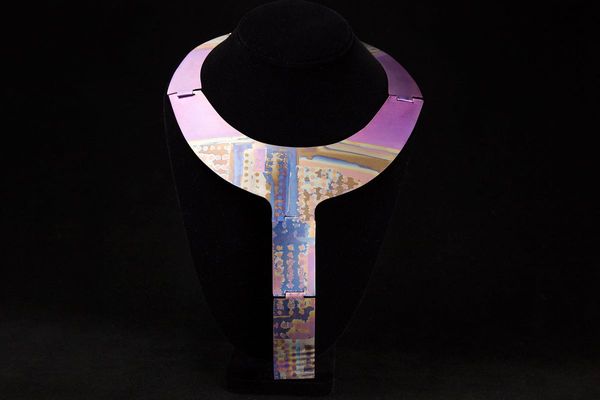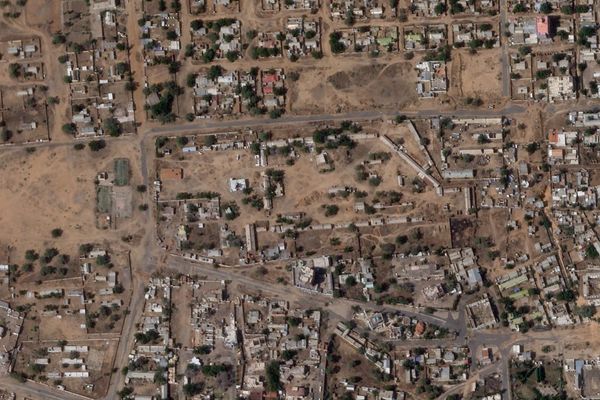The James Webb Space Telescope (JWST) has delivered another stunning series of space images, providing humanity with more, never-before-seen details.
This time, it's of Cassiopeia A (Cas A), the remnants of a supernova, otherwise known as a very, very powerful explosion of a star.
That explosion happened 340 years ago — from Earth's perspective, that is — but the images are of the youngest-known supernova remnants in our galaxy.
As such, it has been studied in great detail for decades.
However, it's only now, thanks to the JWST, that we have clearer pictures of it — and can appreciate why it has the nickname "the green monster".
What did the older images look like?
Now show me the full-sized new image
The most recent image was created using data from JWST's Mid-Infrared Instrument (MIRI).
The JWST uses infrared light that our eyes are unable to see.
All infrared wavelengths are beyond human vision — JWST uses two different types of infrared.
The JWST's MIRI instrument uses longer wavelengths of infrared light than other telescopes such as Hubble.
And that's a big deal, as Webb program co-investigator Tea Temim of Princeton University explained in a NASA press release.
"Compared to previous infrared images, we see incredible detail that we haven't been able to access before," she said.
In this new image, infrared light is translated using filters into colours we recognise.
This process, described as both "a science and an art", produces a visualisation of what you would see if you had mid-infrared eyes.
So, technically, it's a 'representative colour image' (more on this below).
What am I looking at?
A whole lot of cosmic dust.
The JWST actually only sends back greyscale white images, which are processed to make what's called a 'representative colour image' .
The telescope detects a wide range of wavelengths invisible to the human eye, so colours have to be chosen to represent them.
The process is pretty close to the techniques used to create the first colour photographs.
Here's how the JWST website explains it:
"Colourising an image involves taking two or more frames made using different filters, assigning a different colour to the black and white pixels of each, and then merging them so that the colours combine."
Scientists usually assign a red colour to the longer-wavelength filters and blue to the shorter wavelengths so "the progression of the colours in the image is in the same order as the wavelengths are in visible light".
"While the colours might be representative, the dark areas show the darkness of space or dense molecular clouds, and the bright regions show the light-emitting features in celestial objects, just as Webb saw them."
What do these colours mean?
This image is a combination of eight filters, each assigned a certain colour:
Here's how NASA explained it:
"On the bubble's exterior, particularly at the top and left, lie curtains of material appearing orange and red due to emission from warm dust.
"This marks where ejected material from the exploded star is ramming into surrounding circumstellar gas and dust.
"Interior to this outer shell lie mottled filaments of bright pink studded with clumps and knots.
"This represents material from the star itself, which is shining due to a mix of various heavy elements, such as oxygen, argon, and neon, as well as dust emission."
What's the 'green monster' bit?
NASA says the "green monster" is a loop, represented in green, which extends across the right side of the central cavity inside the bubble.
Principal investigator of the JWST program Danny Milisavljevic of Purdue University explained it in a NASA press release.
"We've nicknamed it 'the green monster' in honour of Fenway Park in Boston," Dr Milisavljevic said.
Fenway Park is a baseball stadium, with The Green Monster being the name of a large manual scoreboard and grandstand — an iconic and historical feature of the venue.
"If you look closely, you'll notice that it's pockmarked with what look like mini-bubbles," Dr Milisavljevic said.
"The shape and complexity are unexpected and challenging to understand."
How big is Cassiopeia A?
Approximately 10 light-years.
To put that into perspective, the Moon is about 1.3 light-seconds away from Earth.
How far away from Earth is it?
About 11,000 light-years.
What's the point of studying Cassiopeia A?
It's not just about giving us some really cool pictures, as awe-inspiring as they may be.
"Cas A represents our best opportunity to look at the debris field of an exploded star and run a kind of stellar autopsy to understand what type of star was there beforehand and how that star exploded," Dr Milisavljevic said.
It also means researchers can study Cas A's dust content.
And, as NASA points out, this can help us understand more about "building blocks" of planets and, ultimately, ourselves.
That's because supernovae shoot massive amounts of heavy elements across space.
NASA says these explosions are "crucial for life as we know it".
"They spread elements — like the calcium we find in our bones and the iron in our blood — across interstellar space, seeding new generations of stars and planets."
Editor's note (12/04/2023): This story has been updated to explain the colourisation of the image, clarify that it is a ‘representative colour image’ and include a zoomed-out version of the 2002 image.







